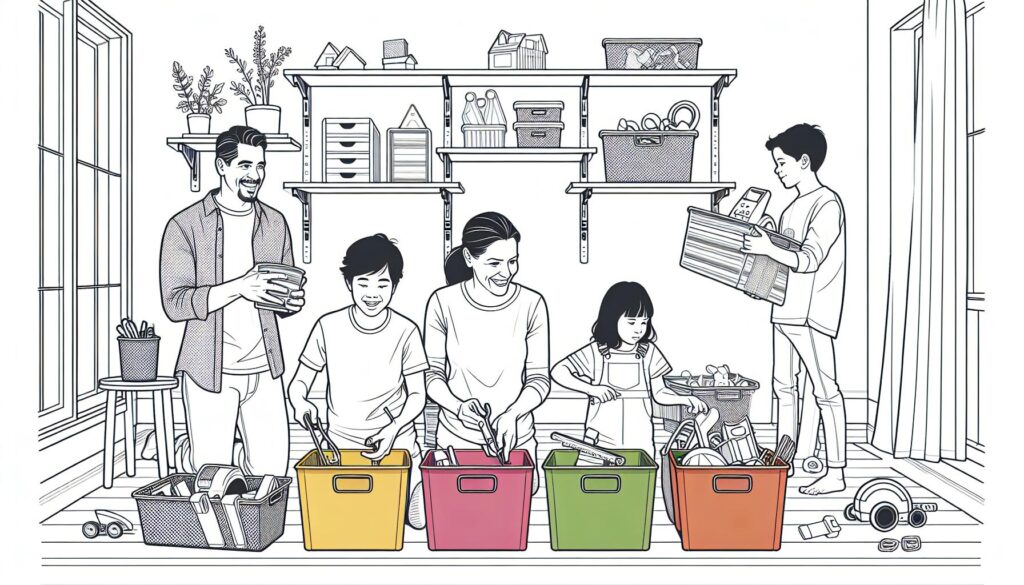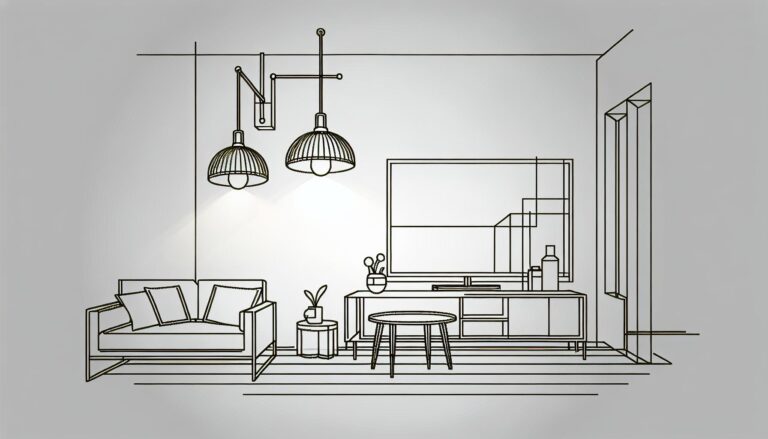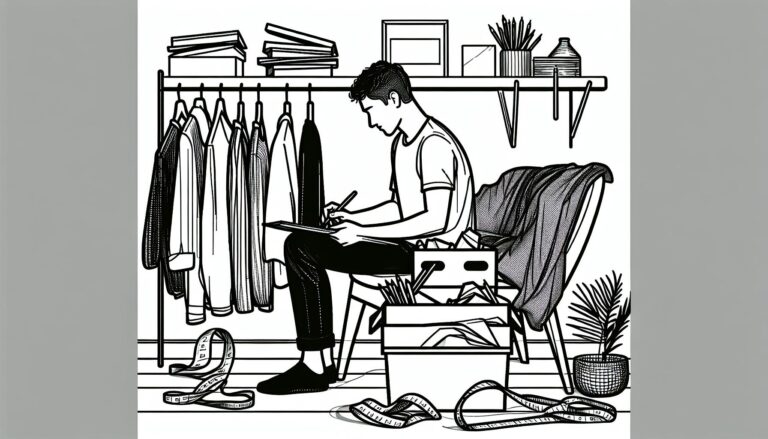As a busy parent, I know how quickly clutter can pile up. Toys, clothes, dishes – you name it, and it’s probably somewhere in my house. But I’ve learned that decluttering isn’t just about tidying up; it’s about creating a more peaceful, efficient home for my family.
That’s why I’m sharing my top decluttering tips for busy parents. These strategies have helped me manage the chaos, and I’m confident they can do the same for you. Whether you’re a working parent, a stay-at-home parent, or somewhere in between, these tips will help you keep your home (and your sanity) intact.
So, let’s dive in. Here’s how to declutter your home – without losing your mind.
Assess the Clutter Situation
As a tried-and-true decluttering expert, I cannot stress enough how crucial it is to first identify your clutter hotspots. Bear in mind that before starting the decluttering journey, understanding your unique clutter situation forms the basis of an effective declutter plan.
To start off, I’d recommend carrying out a quick home scan. This doesn’t have to be a meticulous, draining process – a simple walkthrough each room should suffice. Note down the areas that are clutter-prone. For busy parents, common clutter zones often include kids’ rooms, kitchens, and home offices.
I’ve found that clutter generally falls into three primary categories:
- Things you don’t use or need
- Items misplaced or not in their ‘home’
- Stuff you’re unsure what to do with (yes, we all have that random drawer filled with miscellaneous items)
A convenient way to visualize the clutter in your home would be to map them out. Highlight the clutter hotspots and the type of clutter they house. Something as simple as using sticky notes can serve this purpose. In doing so, you’ll gain a tangible, clear view of your clutter situation and address each issue systematically.
But why exactly are these steps important? Well, by assessing your clutter situation, you’re pinpointing potential problem areas and patterns. This is a crucial step in preventing future clutter. After all, knowing what leads to clutter is half the battle won!
Understanding the clutter situation does more than just rectify immediate disarray. It also uncovers hidden patterns that could help improve overall home organization. For instance, if you realize your child tends to leave toys in the living room, it might be because there isn’t an easy storage solution there.
Set Realistic Goals
Let’s face it. Decluttering can seem like a mountainous task, especially for parents who juggle professional commitments and parenthood. Guess what, though? It doesn’t have to be that way. By setting realistic, achievable decluttering goals, you’re already half way there.
First, avoid the trap of setting big, broad goals like “I’ll declutter the entire house by Friday!” Break the process down to make it manageable. Start small by setting daily decluttering tasks. Could be as simple as deciding to declutter one drawer in your kitchen today. The key is to focus on one thing at a time.
When setting your decluttering goals, factor in the reality of your home life. If your kids’ toys are scattered everywhere, your goals must include involving them. Make decluttering a family activity. It’s a great chance to teach responsibility and organization to your children.
You’ve set your goals, how can you make sure they’re achieved? The answer lies in keeping yourself accountable. Use tools like decluttering logs or diaries to track progress over time. When you see the progress written down, it motivates you to reach your decluttering targets.
Also, remember, mistakes happen. It’s alright to fall off schedule sometimes. Life happens. Instead of beating yourself up, analyze why you couldn’t meet a goal and adjust accordingly. Success in decluttering isn’t about perfection, it’s about progress.
In brief, decluttering isn’t a sprint, it’s a marathon. You’re not just cleaning your house, you’re changing habits and fostering a clutter-free lifestyle. So, as you set your decluttering goals, remember to keep them realistic, flexible, and trackable.
Remember this simplified approach to setting decluttering goals:
- Start small,
- involve your family,
- track your progress,
- adjust as needed.
Always keep your goals aligned with your family lifestyle and the root causes of clutter identified in your hotspot assessment. The purpose of setting realistic goals is not to make decluttering an added stressor in your busy lives but to make it a seamless part of your routines. Breaking the job into manageable chunks and celebrating small victories along the way can make decluttering a less overwhelming and more rewarding experience.
Establish a Decluttering Routine
Developing a regular decluttering routine can be a game-changer for busy parents. It’s a surefire way to prevent mess from piling up and becoming overwhelming to deal with. It’s easy to ignore a small pile of toys or a few dirty dishes until suddenly, it’s not small anymore. And when we let clutter accumulate, even the thought of tackling it can be stressful. But don’t fret, I’m here to help you establish a manageable decluttering routine that will fit into your busy schedule.
Start small. Identify a decluttering task that you can complete in ten minutes or less each day. This could be as simple as clearing the breakfast dishes before heading out for work or spending a few minutes tidying up the kids’ playroom before bedtime. The idea here is to establish a habit of decluttering rather than doing a full-house cleanup in a day. Human psychology suggests that it’s easier to form habits when we start small and slowly increase the challenge.
Moreover, consistency is key. Allocate a specific time slot for decluttering, and treat it just as important as any other appointment in your day. You could schedule your decluttering task first thing in the morning, after dinner, or right before bed — whatever works best for your family’s routine.
Involving the whole family in the decluttering process promotes accountability and instills good habits in kids from a young age. If everyone in your family spends just ten minutes a day decluttering, the impact will be significant.
- Create a family decluttering chart and place it somewhere visible.
- Assign each member a specific decluttering task they can manage daily.
- Run a weekly check-in to track progress.
Remember, tweaking your goals as needed is crucial. If a task seems overwhelming, break it down further. There’s no shame in adjusting your routine to fit your lifestyle. Your goal is progress, not perfection. Keep track of your victories no matter how small! Every decluttered area, cleared table, or emptied bin is a step in the right direction.
Get the Kids Involved
Now that we’ve highlighted the benefits of establishing a decluttering routine and given insights on how to start, it’s crucial to touch on a fundamental part of the process – involving your kids. Don’t transgress this step! Making decluttering a family affair not only lightens the workload for the adults, but it also instills valuable skills and responsible habits in the children.
First off, let me stress communication is key. Talk to them about what decluttering means and its importance. Show them before and after pictures to let them see the effects of tidying up. Make sure they understand it’s not about carelessly getting rid of stuff, but about creating a cleaner, more harmonious environment for everyone.
Next, make it fun. Turn the task into a game. It could be as simple as setting a timer for five minutes and seeing who can clean up the most or coming up with creative organizing systems together. Remember, decluttering shouldn’t feel like a chore, but an enjoyable task.
Let’s not forget about rewarding their efforts. This doesn’t have to be big. A simple high-five, words of praise or acknowledgment can make it feel worthwhile. And yes, a little treat or a reward like an extra playtime hour can make all the difference!
Here’s a table to help you set up a decluttering system involving your children:
| Actions | Description |
|---|---|
| Communicate the Why | Explain the importance and benefits of decluttering |
| Make it Fun | Turn decluttering into a fun game or challenge |
| Involve them in Organizing | Let them participate in creating organizing systems |
| Reward their Efforts | Encourage their efforts with praise or small rewards |
By involving your children in the decluttering process, you’re not only freeing up your schedule, but you’re also teaching them invaluable life skills. Give it a try and see how the decluttering process can also bring your family closer together.
Utilize Storage Solutions
One of the main keys to maintaining a clutter-free environment is effective storage. For busy parents, this comes down to finding storage solutions that are not just functional but also kid-friendly. I’ve discovered a variety of options that work well in any space, regardless of size.
Floating shelves are a godsend for small spaces. They not only make use of vertical space but also add a touch of style to any room. In my experience, if the shelves are placed at the eye-level of the child, they’ll be more likely to use them for their items.
Storage bins are another fantastic option. You may have overlooked them because of their utilitarian look but nowadays, they come in all sorts of fun, vibrant colors and materials, like plastic, metal and fabric. Remember, it’s important to include your children when picking out these bins. They’ll feel more involved in the process and take more responsibility for their belongings.
Under-bed storage is a hidden gem. It’s surprising how much stuff can be stored in these often underutilized spaces. From seasonal clothes and shoes to bulky toys, under-bed storage is a space-saving wonder. Some beds even come with built-in drawers, making it easier than ever to stash away items out of sight but easily accessible.
For bulkier items, like bikes and large toys, garage storage solutions come to the rescue. Wall-mounted hooks for bikes and stackable storage for toys can dramatically shift the feel of the entire garage.
But it’s not always about buying new storage equipment. Sometimes, it’s about optimizing what you already have. Your home is full of storage potentials you might not have considered, like the back of doors or the inside of closet doors. By adding some hooks or small baskets, these spaces can be transformed into useful storage.
Remember, the goal of these storage solutions isn’t just to hide away clutter. It’s to help children learn about organizing their belongings and maintaining a tidy environment. When your child can easily find what they want when they want it, it saves time, reduces stress, and fosters a sense of independence. That’s a triple win in my book.
So, don’t wait. Start exploring these storage solutions now and turn that cluttered chaos into a serene space.
Key Takeaways
- Assess the Clutter Situation: Understand your unique clutter situation by doing a quick walkthrough of each room and identifying clutter hotspots like kids’ rooms, kitchens, and home offices. Clutter often falls into categories like things you don’t use, misplaced items, or objects you’re unsure about. Mapping out and highlighting these hotspots can provide a clear view of your clutter problem and help address each issue systematically.
- Set Realistic Decluttering Goals: Big, broad goals can often feel overwhelming. It’s much more efficient to break down the process into manageable tasks, like decluttering one drawer at a time. Make sure to include your whole family in this process to instill responsibility and organization, track your progress for motivation, and adjust your goals as needed. Remember, decluttering is a marathon, not a sprint.
- Establish a Decluttering Routine: Starting small with daily 10-minute decluttering tasks can make a huge impact over time. Consistency is key. Schedule these tasks as you would any other necessary appointment and don’t be afraid to tweak your goals or routine to fit your lifestyle.
- Involvement of the Kids: Involving children in the decluttering process can not only lighten the workload for adults but also teach responsible habits to youngsters. Communicate the importance of decluttering, make it a fun activity, have them participate in organizing, and incentivize their effort with small rewards.
- Utilize Storage Solutions: Maintain a clutter-free environment by using effective, kid-friendly storage options depending on the size and design of your personal space. Options such as floating shelves, storage bins, under-bed storage, and utilizing potential household storage areas can help to declutter and organize. Besides, intentional use of storage teaches children the importance of organization and fosters a sense of independence.
Conclusion
So there you have it! By embracing smart storage solutions and getting your kids on board, you’ll find decluttering becomes less of a chore and more of a lifestyle. Remember, it’s all about making the most of the space you have and teaching your little ones the value of organization. It’s not just about a tidy home—it’s about fostering independence and reducing stress. And who doesn’t want that? So, go ahead and start your decluttering journey today. You’ve got this!
Frequently Asked Questions
What is the main focus of this article?
The article emphasizes the benefits of using proper storage solutions in managing a clutter-free environment. It promotes the use of various storage options and involving children in organizational responsibilities.
What are some of the storage solutions mentioned in the article?
The article mentions various storage solutions such as floating shelves, storage bins, under-bed storage, and garage storage solutions.
How does a tidy environment benefit children?
A clutter-free environment encourages independence in children. It teaches them about organization, responsibility and helps in reducing stress levels.
Why is it suggested to involve children in the selection of storage solutions?
Involving children in the selection of storage solutions makes them feel more responsible for their belongings. It also educates them about the importance of tidiness and being organized.
What is the ultimate goal of using proper storage solutions?
The final goal of adequate storage solutions is to create an optimized, tidy environment that reduces stress and promotes independence.



